Furey says upcoming talks with Quebec premier are discussions, not negotiations, on Churchill Falls
Wed, February 22, 2023
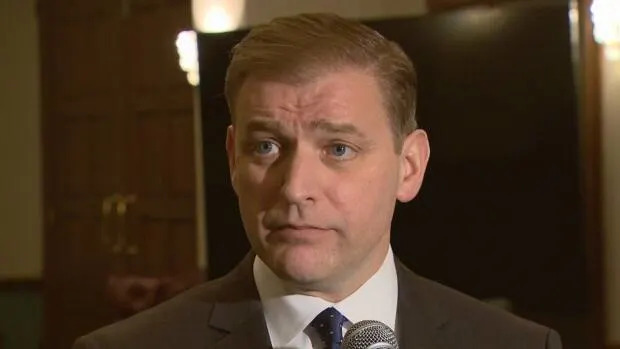
Mike Simms/CBC
On the eve of Quebec Premier François Legault's visit to St. John's, Newfoundland and Labrador Premier Andrew Furey downplayed the significance of any discussions about the Churchill Falls contract.
Furey, speaking with reporters Wednesday, said "very high-level" discussions would happen Friday but wouldn't go so far as to call them negotiations.
"At this point I would use the word 'discussions' and not 'negotiations.' What happens after Friday, I will certainly provide an update," he said. He added, however, that Legault seems to be approaching the talks "with a sense of urgency" to secure new sources of energy for Quebec.
"I think if you look at the disruption in the energy markets, specifically as it pertains to Quebec, there is an urgent need in Quebec, not just for export but for domestic use," Furey said.
In January, Furey said there wasn't a guarantee negotiations would even happen, adding it was important to note Hydro-Quebéc still owns nearly 35 per cent of Churchill Falls (Labrador) Corporation Limited. At the time, Furey said if negotiations were to happen, he was "comfortable" with Newfoundland and Labrador's negotiating position.
On Wednesday, he reiterated that point.
"Newfoundland and Labrador is in a great position, and we will make sure that we exercise the appropriate timeline to do the right deal for Newfoundland and Labrador," Furey said.
"Since I took over we managed to take care of Muskrat Falls with the rate mitigation deal. We are in a good position because of that. The economy has turned around. We're not on bended knee to Quebec. Quebec is coming to us."
Churchill Falls supplies nearly 15 per cent of Quebec's electricity needs. The contract, which took effect in 1969, is set to expire in 2041, and has been a sore spot for Newfoundland and Labrador for decades. The province is locked into selling electricity to Quebec for the rock-bottom price of 0.2 cents per kilowatt-hour to Quebec, which sells
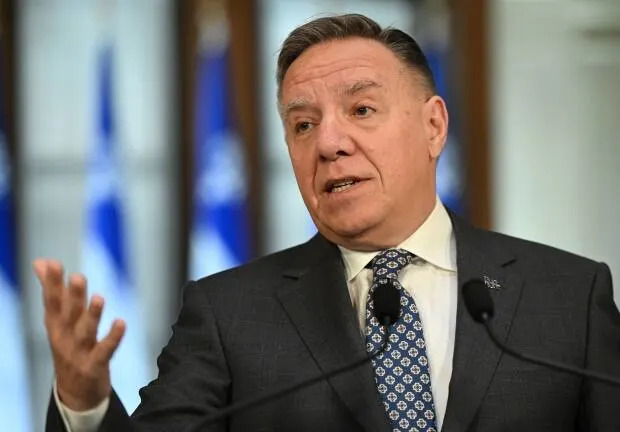
Jacques Boissinot/The Canadian Press
Legault has said there's interest in expanding the Churchill Falls dam and building a new project at Gull Island, also on the Churchill River.
On Wednesday, Legault told reporters said striking a new deal will take time and won't be easy.
"There's an opening for both sides. Of course it will have to be a win-win agreement," he said.
"We know that it's important for us to renew the contract after 2041 as soon as possible because it needs about 15 years before building a new dam. So we need to know what will be our capacity starting in 2041."
Legault said Newfoundland and Labrador will have some demands, which he said he will listen to and balance to find a deal that is a good fit for both sides.
Need a gesture of good faith: Brazil
Interim PC Leader David Brazil said the situation is "alarming" and "confusing."
"We're reading that the premier of Quebec is talking about coming here for negotiations. The premier of Newfoundland and Labrador is talking about having discussions. We need to know what's happening on Friday," Brazil told reporters.
"Is there already a deal that's been struck? Is there already some conversations about what Quebec will benefit from this? What the time frames will be? The initial conversation here should be about how do we rectify the wrongs of the past and make sure that in good faith there's a negotiated deal that benefits the people of Newfoundland and Labrador."
Brazil said there's a lot of making up to do for the last 60 years and there has to be a gesture of good faith and Furey needs to release the details of the meeting after it happens.
He said he would like to see some compensation paid to Newfoundland and Labrador.
Furey said there haven't been discussions among officials from Quebec and Newfoundland and Labrador about a new Churchill Falls contract, other than the conversations he has had with Legault over the last 2½ years.
The premier wouldn't provide details Wednesday on what will be discussed in Friday's meeting, saying he didn't want to reveal Newfoundland and Labrador's commercial interests ahead of time.
B.C. diver finds horseshoe crab: 'I knew immediately it wasn't supposed to be here'
Wed, February 22, 2023
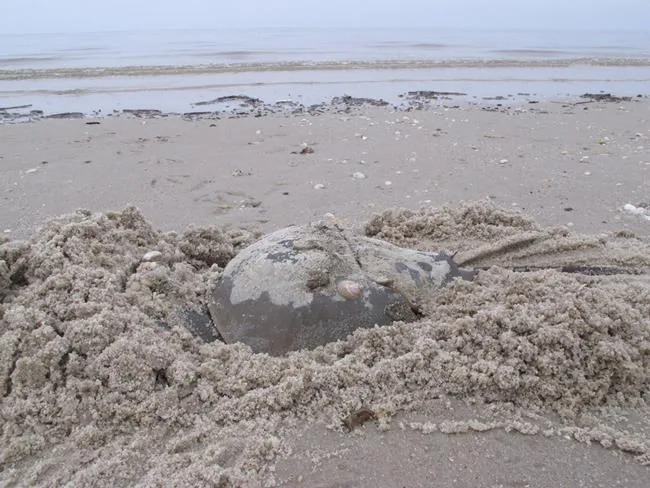
VANCOUVER — A scuba diver cleaning part of the sea floor in a Vancouver inlet came across an animal that an expert says is a long way from home.
The unusual find has been identified as a horseshoe crab, native to the Atlantic Ocean along the North American coastline.
"This is not a species that's indigenous to our water here, but as soon as I saw it, I knew what it was," diver Henry Wang said in an interview.
"I knew immediately it wasn't supposed to be here."
Wang said he was really excited and posted a short clip to social media about his dive on Friday in False Creek, showcasing the discovery. In the video, he is seen gently nudging the shell before displaced sediment clouds the camera's view.
Michael Hart, a professor of biological sciences at Simon Fraser University, saw the video and said he doesn't believe the crab is alive.
"The long tail is used to dig in sediment, so I would expect a live animal to react by flexing the tail. The live animal also has five pairs of walking legs under the big dome-shaped carapace, and those would normally react by trying to back away from a large animal like a scuba diver," he said.
Hart noted there are four species of horseshoe crabs. Though he said it is hard to tell from the video, he speculates this was an Atlantic horseshoe crab, which live in the Atlantic Ocean along the North American coastline and Gulf coasts from Maine to Mexico. The other three species are found in Southeast Asia.
Hart said Pacific water around Vancouver is too cold for the crabs to survive and for them to reproduce as the embryos develop in the sand of warm beaches.
"Horseshoe crabs are often collected, killed, and the lacquered shells sold as ornaments. This could be a discarded decoration. The other possibility noted by the YouTube poster Henry Wang is that the crab was an aquarium pet that was dumped in the creek," Hart said.
"I sincerely think this isn't a biology story, it's a waste management story."
Wang, who is the co-founder of Divers for Cleaner Lakes and Oceans, said he lost all visibility after prodding the crab shell, and because he wasn't yet certain if it was dead, he did not remove the crab from the water.
"Crabs are above my pay grade," he joked. "I'm only there to get the garbage out."
Divers for Cleaner Lakes and Oceans has been removing trash from B.C.'s waterways since 2013. Wang said the group has done over 200 cleanup dives and removed more than 50,000 pounds of garbage.
He said they often film their dives to post on social media to showcase how much garbage they collect, hoping to inspire change in the way people act around waterways.
Wang explained he was diving in False Creek to recover mats that had been blown into the waterwhen he noticed the crab under a floating dock.
He said he considers it the "craziest" find so far. Other interesting discoveries, he said, include 120-year-old logging tools and a 90-year-old Puget Sound Falling Axe.
"This is my new craziest thing. It's awesome, but I'm sure something else will pop up eventually because I keep finding things," Wang said. "I had no idea I was going to find a horseshoe crab. That's just how things worked out."
This report by The Canadian Press was first published Feb. 22, 2023.
Brieanna Charlebois, The Canadian Press
IMPERIALIST RESCUE DELAYED
Under-equipped and under fire, Haiti's police await delayed shipments of Canadian armourWed, February 22, 2023  Police patrol Port-au-Prince, Haiti on Jan. 31, 2023, after a funeral for three officers who were killed in the line of duty. The officers were killed in an ambush by gang members in the capital on Jan. 20. (Odelyn Joseph/Associated Press - image credit)On Sunday, Prime Minister Justin Trudeau announced a third shipment of Canadian armoured vehicles to Haiti. The vehicles are meant to help the Haitian National Police fight a shooting war with heavily-armed gangs that control close to two-thirds of the capital Port-au-Prince.But the three vehicles shipped this week, plus those already sent to Haiti in two previous shipments, amount to only half of the total number of vehicles Haiti purchased.The deadline for the contract had been extended already to the end of December 2022 — by which point only three of 18 vehicles had been delivered.This latest shipment won't come a moment too soon for a police force that is seeing its officers killed off at a rate of about one every two or three days.With the delivery of three new INKAS mine-resistant, ambush-protected vehicles, the Toronto-based supplier will have fulfilled half of its contract to deliver 18 vehicles.Three were delivered back in October of last year and three more landed on January 11. Both shipments were carried by a Royal Canadian Air Force C-17 Globemaster cargo plane.
Police patrol Port-au-Prince, Haiti on Jan. 31, 2023, after a funeral for three officers who were killed in the line of duty. The officers were killed in an ambush by gang members in the capital on Jan. 20. (Odelyn Joseph/Associated Press - image credit)On Sunday, Prime Minister Justin Trudeau announced a third shipment of Canadian armoured vehicles to Haiti. The vehicles are meant to help the Haitian National Police fight a shooting war with heavily-armed gangs that control close to two-thirds of the capital Port-au-Prince.But the three vehicles shipped this week, plus those already sent to Haiti in two previous shipments, amount to only half of the total number of vehicles Haiti purchased.The deadline for the contract had been extended already to the end of December 2022 — by which point only three of 18 vehicles had been delivered.This latest shipment won't come a moment too soon for a police force that is seeing its officers killed off at a rate of about one every two or three days.With the delivery of three new INKAS mine-resistant, ambush-protected vehicles, the Toronto-based supplier will have fulfilled half of its contract to deliver 18 vehicles.Three were delivered back in October of last year and three more landed on January 11. Both shipments were carried by a Royal Canadian Air Force C-17 Globemaster cargo plane.
Frustration over delaysFrustration over the slow pace of deliveries has ramped up tensions within the force, leading to armed protests and strikes by police officers — even as gangs gradually expand their areas of control.The year to date has seen the plight of Haiti's police take a turn for the worse, Canada's Ambassador to Haiti Sébastien Carrière told CBC News."It's been a rough couple of months," he said. "They've had some losses, more than usual I would say in the last month. Brutal killings." Levon Sevunts/Radio Canada InternationalEugene Gerstein of INKAS, which produces the vehicles at its facility in Weston, Ont., said he's very aware of the conditions Haitian police face."I've personally visited Haiti with our teams multiple times. I've spoken to multiple officers," he said. "I understand their plight. I understand the predicament."I visited Haiti for the first time in 2010, right after the earthquake, and in the 13 years since I've seen the country spiral into darkness. We really want to help."In terms of protection, it's a terrifying feeling when you sit in an armoured vehicle and you hear .50-calibre projectiles hitting against the hull ... knowing that this is what stands between you and death. We're proud to be a part of this mission. We're proud to help save lives."
Levon Sevunts/Radio Canada InternationalEugene Gerstein of INKAS, which produces the vehicles at its facility in Weston, Ont., said he's very aware of the conditions Haitian police face."I've personally visited Haiti with our teams multiple times. I've spoken to multiple officers," he said. "I understand their plight. I understand the predicament."I visited Haiti for the first time in 2010, right after the earthquake, and in the 13 years since I've seen the country spiral into darkness. We really want to help."In terms of protection, it's a terrifying feeling when you sit in an armoured vehicle and you hear .50-calibre projectiles hitting against the hull ... knowing that this is what stands between you and death. We're proud to be a part of this mission. We're proud to help save lives."
A police force in crisisAs almost the only part of the Haitian state that is still functioning, Haiti's police have borne the brunt of the battle to prevent the country from slipping into total anarchy.Killings have occurred during police combat with heavily-armed gangs, but also in ambushes, targeted assassinations, and attacks on police stations.When police are driven from a police station — as recently happened in the Port-au-Prince neighbourhood of Pernier — the gangs will often burn the building to prevent them from returning.Port-au-Prince is now essentially surrounded by gang territory. The ring around the city is not complete but anyone passing through it is at risk of being kidnapped or robbed — or worse. Odelyn Joseph/Associated PressIn late January, a shadowy group known as Fantome 509, made up largely of active and former police officers, staged angry protests around the city. Shots were fired at the residence of de-facto prime minister Ariel Henry, although he was out of the country at a summit in Buenos Aires at the time. Another group laid siege to the airport as he returned, forcing him to remain in the terminal for several hours.And in the city of Gonaives, protesting police have stopped showing up for work since six of their comrades were killed in a nearby town by the Gran Grif gang — which mutilated their bodies and posted the videos to the internet. The bodies were not recovered.CBC News contacted Haitian National Police but was unable to get the force to discuss those issues.
Odelyn Joseph/Associated PressIn late January, a shadowy group known as Fantome 509, made up largely of active and former police officers, staged angry protests around the city. Shots were fired at the residence of de-facto prime minister Ariel Henry, although he was out of the country at a summit in Buenos Aires at the time. Another group laid siege to the airport as he returned, forcing him to remain in the terminal for several hours.And in the city of Gonaives, protesting police have stopped showing up for work since six of their comrades were killed in a nearby town by the Gran Grif gang — which mutilated their bodies and posted the videos to the internet. The bodies were not recovered.CBC News contacted Haitian National Police but was unable to get the force to discuss those issues.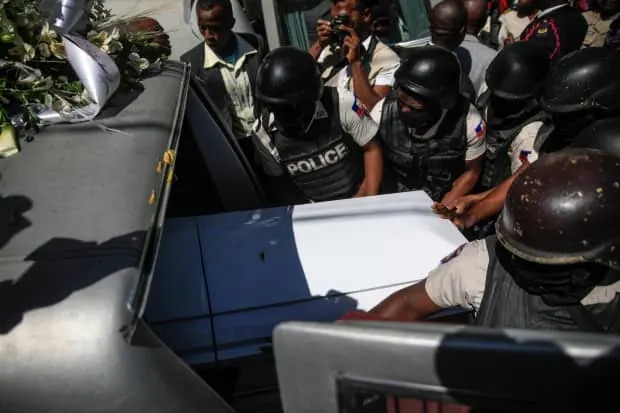 Odelyn Joseph/The Associated PressThe INKAS vehicles can provide police with the protection they need to enter gang territory. They were used last October to clear a gang blockade of Haiti's main fuel terminal that had brought commerce and transport almost to a standstill.INKAS told CBC News the company is working flat-out to provide the remaining vehicles as soon as it can. The company said the delays are due to a combination of supply-chain issues and changes demanded by the Haitian buyers post-contract.When it became clear the gangs had access to heavy weaponry, said Gerstein, the police "felt that they needed additional protection.""One of the interesting things I've heard from them is, look, they shoot at us from above," he said."They required, for their confidence, protection in various additional areas. They wanted protective canopies of their own design that they've changed two or three times. I believe they currently have the final result. Looks like they're happy with it, so we're happy for them."A 'trench fight' for partsThe supply-chain issues that have snarled manufacturing networks worldwide have also set back the manufacturing process for Haiti's armoured cars, said Gerstein."The war in Ukraine has affected manufacturers like Volkswagen Audi. It turned out that wiring harnesses for many vehicles that Volkswagen Audi produces are made in Ukraine," he said.Gerstein said his company's vehicles have been caught up in the same supply chain tangles that are causing new civilian passenger cars to pile up in lots across North America."More often than not, a vehicle is ready, but it lacks a part that might be worth $100, like a sensor. Without that sensor, the vehicle cannot operate," he said."In our case, for example, transmission speed sensors were one of the issues that we've encountered."We're doing everything in our power to speed up the manufacturing process. We are acquiring the needed parts from everywhere, from all over the world ... working around the clock in shifts. Our procurement department is chasing parts around the world."It's a trench fight trying to get parts that someone else is trying to get."A pound full of broken-down vehiclesIn the meantime, INKAS said it has provided Haitian police with "a number of armoured personnel carriers for relief" that were not included in the additional contract.There is also a question of training. CBC News has seen video shot in a Haitian police vehicle compound that shows a number of armoured vehicles, made by more than one manufacturer, that are clearly broken down. Many no longer have wheels. All show scars of small arms fire, sometimes on all sides of the vehicle.But some also have voiced concerns about operator error and poor maintenance practices."Haiti needs, unfortunately, training, a lot of training," said INKAS chair Margarita Simkin.
Odelyn Joseph/The Associated PressThe INKAS vehicles can provide police with the protection they need to enter gang territory. They were used last October to clear a gang blockade of Haiti's main fuel terminal that had brought commerce and transport almost to a standstill.INKAS told CBC News the company is working flat-out to provide the remaining vehicles as soon as it can. The company said the delays are due to a combination of supply-chain issues and changes demanded by the Haitian buyers post-contract.When it became clear the gangs had access to heavy weaponry, said Gerstein, the police "felt that they needed additional protection.""One of the interesting things I've heard from them is, look, they shoot at us from above," he said."They required, for their confidence, protection in various additional areas. They wanted protective canopies of their own design that they've changed two or three times. I believe they currently have the final result. Looks like they're happy with it, so we're happy for them."A 'trench fight' for partsThe supply-chain issues that have snarled manufacturing networks worldwide have also set back the manufacturing process for Haiti's armoured cars, said Gerstein."The war in Ukraine has affected manufacturers like Volkswagen Audi. It turned out that wiring harnesses for many vehicles that Volkswagen Audi produces are made in Ukraine," he said.Gerstein said his company's vehicles have been caught up in the same supply chain tangles that are causing new civilian passenger cars to pile up in lots across North America."More often than not, a vehicle is ready, but it lacks a part that might be worth $100, like a sensor. Without that sensor, the vehicle cannot operate," he said."In our case, for example, transmission speed sensors were one of the issues that we've encountered."We're doing everything in our power to speed up the manufacturing process. We are acquiring the needed parts from everywhere, from all over the world ... working around the clock in shifts. Our procurement department is chasing parts around the world."It's a trench fight trying to get parts that someone else is trying to get."A pound full of broken-down vehiclesIn the meantime, INKAS said it has provided Haitian police with "a number of armoured personnel carriers for relief" that were not included in the additional contract.There is also a question of training. CBC News has seen video shot in a Haitian police vehicle compound that shows a number of armoured vehicles, made by more than one manufacturer, that are clearly broken down. Many no longer have wheels. All show scars of small arms fire, sometimes on all sides of the vehicle.But some also have voiced concerns about operator error and poor maintenance practices."Haiti needs, unfortunately, training, a lot of training," said INKAS chair Margarita Simkin.

Odelyn Joseph/Associated Press
According to both INKAS and Canadian officials, one of INKAS's brand new vehicles was rendered useless just days after arriving when Haitian police locked the differential and then tried to push the vehicle with a bulldozer, stripping the planetary gears.
"Aside from additional vehicles to Haiti, we have sent multiple groups of our own employees to train Haiti police with driver training, with mechanics," said Simkin. "We currently have two of our mechanics on the ground as is."
'They care for their country'
The vehicles are not a gift from Canada, but the Canadian air force has stepped up to fly them into the country and is expected to continue to do so.
Last week, Trudeau said Canada would be sending two coastal defence vessels to patrol the Port-au-Prince bay and harbour, an area that has seen a considerable amount of gang activity. The ships are also expected to play an intelligence and eavesdropping role.
Canada also sent a CP-140 Aurora surveillance aircraft to overfly the city for a few days earlier this month in support of police operations. The plane is expected to return at some point.
But the main battle is in Haiti's streets and shantytowns, where Haitian police can no longer venture without armoured vehicles.
Gerstein said INKAS hopes to fulfil its contract shortly; four more vehicles are set to leave in March and the final eight are to be dispatched within about 60 days.
"I've spent time talking to police officers in the Haitian national police, you know, from rank and file to senior officers, and there is one narrative that is there at all times. They care for their country," he said. "They care for the future of their children. They're risking their lives on a daily basis ... The criminals can find out what they look like. The criminals can find out where they live.
"They're hard workers and we're trying our best."
'Large tension crack' threatens major sewer line in Whitehorse
Wed, February 22, 2023
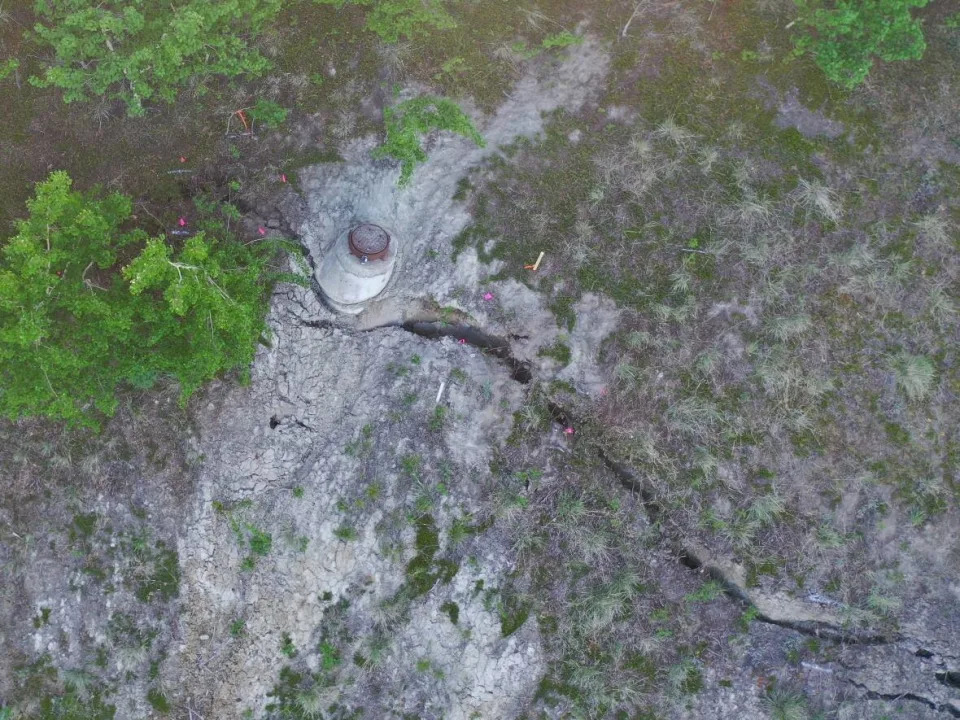
A photo taken from a drone in June 2022 shows a manhole near a large tension crack on Whitehorse's escarpment. City officials say the crack is expected to eventually cause a slide, and that threatens one of the city's main sewer lines. (City of Whitehorse - image credit)
Whitehorse city officials say one of the city's main sewer lines is at risk from a probable landslide, maybe even this year — and it's a $10-million fix to avoid a potential "uncontrolled release" of raw sewage.
City engineers say a "large tension crack" was discovered last spring along the Takhini sanitary trunk line, which carries nearly half of the city's raw sewage to the Marwell lift station. The crack is just east of the Pepsi Softball Centre on Range Road, on a relatively steep section of the escarpment.
It's similar to other cracks that were seen elsewhere along the escarpment before a series of landslides last spring.
"Based on the hazard and risk assessment completed by the City's geotechnical engineering consultants, there is a high probability of imminent slope failure that will damage or destroy this portion of the main within the next year," reads an analysis presented at a city committee meeting on Monday.
Speaking at a news conference on Tuesday, Gareth Earl, the city's associate manager of engineering services, said a slide is "highly probable."
"So we're doing our due diligence to prepare for that."

Paul Tukker/CBC
The steel-pipe sewer line at risk was installed in 1975 and it carries raw sewage to the Marwell lift station from an area including the residential neighbourhoods of Takhini, McIntyre, Arkell, Ingram, Copper Ridge, and Granger, as well as Yukon University, the Canada Games Centre and the Whitehorse Correctional Centre. Earl says it carries about 40 to 50 per cent of the city's sewage, at a rate of about 150 to 200 litres per second, "roughly equivalent to like, 1,000 kitchen taps left on."
The plan is to construct a new sewer main around the potential landslide area later this year. City council is being asked to approve the $10-million budget so a tender can go out next month, and work can begin this spring.
The design includes approximately 1.2 kilometres of sewer line that would go along Range Road and then down a more gentle slope to Marwell.
In the meantime, city engineers have designed a temporary bypass that will be used once the spring melt begins, likely in April. The bypass involves an above-ground pipe and will be used until the new main is operational.

Paul Tukker/CBC
The city also dug a sump at the bottom of the slope last year to collect any sewage in case of a spill.
Several landslides in 2022
Whitehorse's escarpment was under the microscope last spring after several landslides during the spring melt. One large landslide blocked off one of the main thoroughfares into downtown for several weeks.
The tension crack that threatens the Takhini sewer main was discovered last June. It was not there during an inspection a year earlier, city officials say.
City council last summer approved $350,000 to immediately begin work on a solution for the sewer main. Now council is being asked to find another $9.75 million to complete the work.
The project would go out for tender next month, and work is expected to begin by May and be done before the end of 2023.
In the meantime, Earl said engineers will continue to monitor the tension crack and the sewage flow for any change.
Despite recruitment efforts, N.L.'s family doctor shortage is getting worse
Wed, February 22, 2023

From 2021 through 2022, Newfoundland and Labrador had a net loss of seven doctors. (Carsten Koall/Getty Images - image credit)
Despite a long list of efforts to recruit primary-care physicians, Newfoundland and Labrador has lost more family doctors than it has gained over the last two years.
According to the College of Physicians and Surgeons of Newfoundland and Labrador, the body that licenses physicians in the province, 122 family doctors did not renewed their licence to practise in 2021 and 2022.
Over that same period, says the college, 115 new family medicine licences were issued, a new loss of seven doctors — a small one, but one that comes after the government stepped up recruiting efforts because of a shortage that was identified years ago.
"It is concerning. There is a family medicine crisis and we are definitely seeing a lot of young physicians, in particular, choosing not to enter into community-based, family medicine practice," said Dr. Kris Luscombe, president of the Newfoundland and Labrador Medical Association.
"There has been a lot of focus on recruitment and that energy is important, but it's fair to say that we've got a ways to go to have adequate recruitment to meet the needs."
The medical association says it's likely some of new licence holders aren't working full time.
"We're hearing lots of young physicians, new graduates who will say, 'I'll do locum work,' 'I'll go out and cover someone else's practice,' or I'll work in a walk-in clinic,'" said Luscombe. "So we are seeing people changing their practice style so they don't have the ongoing responsibility of having patients attached to them."
More orphaned patients
In 2019, public polling done by the medical association found that about 99,000 people in the province didn't have a family doctor. The association's latest polling shows the situation is getting worse as more members of the province's aging physician population retire.
"We have 136,000 people who now self-identify that they don't have a family physician and we recognize that a lot of people who do have a family physician are at risk if their physicians don't continue in those positions," said Luscombe.

Patrick Butler/Radio-Canada
Luscombe says it's difficult for doctors who continue to practise in the province.
"They are always feeling pressure to take on more patients because they are very sensitive to the fact that there is a lot of people in need out there that aren't attached to family medicine … people that are orphaned, and a lot of physicians struggle with a moral distress about those people who aren't connected and it's very overwhelming," he said.
The medical association has been calling for a Newfoundland and Labrador physician human resource plan for years.
"We have to really maintain metrics and get a sense of are those people full time, part time? What are they doing? Are they doing what the system needs? Then are we aligning the supports and the incentives to have people do what is valued?" said Luscombe.
Family physician forecast
In 2019, the medical association commissioned Dr. David Peachey of Nova Scotia's Health Intelligence Inc. to develop a family physician forecast.
Peachey looked at physician numbers, the number of older adults, the burden of illness, the province's recruitment efforts, physician turnover and expected retirements.
His forecast identified the shortage of family doctors in the province at that time and a projected demand for physicians over the next decade.
Peachey's forecast called for an additional 60 full-time family physicians in 2020 to address the immediate shortage.
It also concluded that an average of about 20 more family doctors per year would be needed for a total of 243 additional family doctors by 2030.
But the college's recruitment and retention numbers for 2020 and 2021 show the province is losing ground rather than making progress toward meeting the forecast's targets.
Recruitment and retention efforts
In the past two years the province has done a lot to attract and keep family doctors.
The provincial government has established a health professional recruitment and retention office and created a new position of assistant deputy minister of health professional recruitment.and retention.
It has created two pilot projects to attract more new medical graduates to family practice, financial support for new family doctors who open a new clinic or join an established clinic in the first two years of practice, and up to $150,000 to new family practice doctors who open a new family medicine clinic or join an existing one and stay for five years.
The province has also expanded the number of seats available to Newfoundland and Labrador residents in Memorial University's undergraduate medical education program and additional seats were added to the family medicine residency program for international medical graduates.
In July, the provincial government launched a publicity campaign, called "Extraordinary Every Day," that aims to recruit and retain health-care professionals
In August, In collaboration with the medical association, the provincial government announced a one-year pilot project to help attract retired family physicians back to work. It offers to pay licence fees and bonuses to returning family physicians.
The province also says it is working with the physicians' college to make it easier for internationally trained health professionals to set up in this province.
In October, the provincial government announced new financial incentives to attract physicians from the province who are working elsewhere to come back to Newfoundland and Labrador.
The government says it's also working on ways to make it easier for physicians who are licensed in other Canadian provinces to work in Newfoundland and Labrador, and in January, the provincial government announced a mission to Ireland to recruit doctors and nurses.
CBC News has made numerous requests for comment from Health Minister Tom Osborne but he has not been made available.
Marine commission: Whale deaths not linked to wind prep workITS NAVY SONAR TO BLAMEWed, February 22, 2023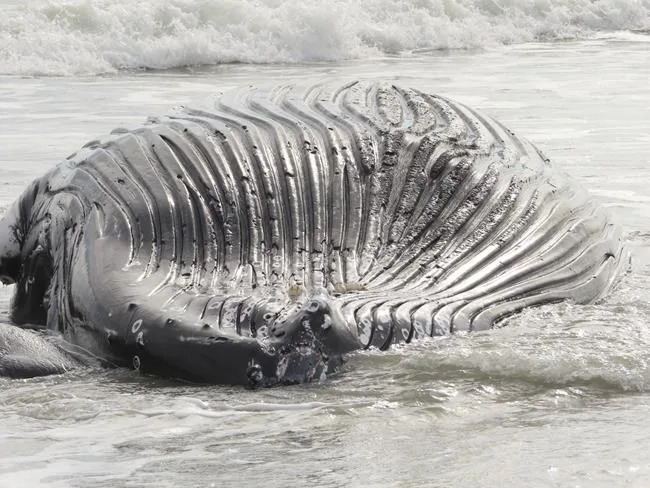 ATLANTIC CITY, N.J. (AP) — An independent scientific agency that advises the federal government on policies that could impact marine mammals said there is no evidence linking site preparation work for offshore wind farms with a number of whale deaths along the U.S. East Coast.In a statement released Tuesday, the Marine Mammal Commission became the third federal agency to reject a link between the deaths and the offshore wind energy industry, despite a growing narrative among offshore wind opponents that probing the ocean floor to prepare for wind turbine projects is killing whales.Last month, the National Oceanic and Atmospheric Administration and the U.S. Bureau of Ocean Energy Management said there is no evidence linking offshore wind development with whale deaths.The commission said 16 humpback whales and at least one critically endangered North Atlantic right whale have washed ashore dead on the East Coast this winter.“Despite several reports in the media, there is no evidence to link these strandings to offshore wind energy development,” the commission said.The deaths are part of an “unusual mortality event” involving humpback whales declared by the National Marine Fisheries Service in 2016. The agency said 40% of the whales that could be examined at necropsy, or post-mortem, showed evidence of a ship strike or entanglement with fishing gear. Others were floating at sea or otherwise inaccessible.The commission said the number of whale strandings is not unusual. Ten or more humpback whales have stranded each year since 2016, with a high of 34 in 2017, it added.It said the number of whales in the northeast is growing, something other agencies have noted as well. As the population grows, more whales are choosing to spend the winter in the northeast, where they are more vulnerable to being struck by ships or entangled in fishing gear, instead of migrating to warmer areas.On Feb. 12, a dead North Atlantic right whale washed ashore in Virginia Beach, Virginia. It was a 20-year-old, 43-foot male.A necropsy was conducted by numerous state and city agencies and a private stranding response program, determining that the whale suffered a catastrophic blunt force traumatic injury, impacting its spine. The injuries, which are consistent with those often found in animals that have been struck by ships, included multiple vertebral fractures that would have resulted in death shortly after the injury.Today, there are fewer than 350 North Atlantic right whales in existence, with fewer than 95 mature females in the population. An unusual mortality event was declared for these animals in 2017.The commission's report comes as offshore wind opponents are pushing for investigations into whether offshore wind is killing whales, even though the federal government has been investigating whale deaths since 2016.Earlier this week, two Republican Congressmen from New Jersey announced legislation aimed at investigating, pausing or halting offshore wind projects.Rep. Chris Smith's bill would require an investigation into the environmental approval process for offshore wind projects. A bill by Rep. Jeff Van Drew would impose a moratorium on all existing offshore wind projects and prohibit all future projects.About 30 New Jersey mayors have signed a letter calling for a moratorium on offshore wind projects and an investigation into whether the whale deaths are related to such work.The Marine Mammal Commission is an independent government agency charged by the Marine Mammal Protection Act to further the conservation of marine mammals and their environment. Its website says it provides “science-based oversight of domestic and international policies and actions of federal agencies with mandates to address human impacts on marine mammals and their ecosystems.”“Our role is unique,” the agency's mission statement said. “We are the only U.S. government agency that provides comprehensive oversight of all science, policy, and management actions affecting marine mammals.”___Follow Wayne Parry on Twitter at www.twitter.com/WayneParryACWayne Parry, The Associated Press
ATLANTIC CITY, N.J. (AP) — An independent scientific agency that advises the federal government on policies that could impact marine mammals said there is no evidence linking site preparation work for offshore wind farms with a number of whale deaths along the U.S. East Coast.In a statement released Tuesday, the Marine Mammal Commission became the third federal agency to reject a link between the deaths and the offshore wind energy industry, despite a growing narrative among offshore wind opponents that probing the ocean floor to prepare for wind turbine projects is killing whales.Last month, the National Oceanic and Atmospheric Administration and the U.S. Bureau of Ocean Energy Management said there is no evidence linking offshore wind development with whale deaths.The commission said 16 humpback whales and at least one critically endangered North Atlantic right whale have washed ashore dead on the East Coast this winter.“Despite several reports in the media, there is no evidence to link these strandings to offshore wind energy development,” the commission said.The deaths are part of an “unusual mortality event” involving humpback whales declared by the National Marine Fisheries Service in 2016. The agency said 40% of the whales that could be examined at necropsy, or post-mortem, showed evidence of a ship strike or entanglement with fishing gear. Others were floating at sea or otherwise inaccessible.The commission said the number of whale strandings is not unusual. Ten or more humpback whales have stranded each year since 2016, with a high of 34 in 2017, it added.It said the number of whales in the northeast is growing, something other agencies have noted as well. As the population grows, more whales are choosing to spend the winter in the northeast, where they are more vulnerable to being struck by ships or entangled in fishing gear, instead of migrating to warmer areas.On Feb. 12, a dead North Atlantic right whale washed ashore in Virginia Beach, Virginia. It was a 20-year-old, 43-foot male.A necropsy was conducted by numerous state and city agencies and a private stranding response program, determining that the whale suffered a catastrophic blunt force traumatic injury, impacting its spine. The injuries, which are consistent with those often found in animals that have been struck by ships, included multiple vertebral fractures that would have resulted in death shortly after the injury.Today, there are fewer than 350 North Atlantic right whales in existence, with fewer than 95 mature females in the population. An unusual mortality event was declared for these animals in 2017.The commission's report comes as offshore wind opponents are pushing for investigations into whether offshore wind is killing whales, even though the federal government has been investigating whale deaths since 2016.Earlier this week, two Republican Congressmen from New Jersey announced legislation aimed at investigating, pausing or halting offshore wind projects.Rep. Chris Smith's bill would require an investigation into the environmental approval process for offshore wind projects. A bill by Rep. Jeff Van Drew would impose a moratorium on all existing offshore wind projects and prohibit all future projects.About 30 New Jersey mayors have signed a letter calling for a moratorium on offshore wind projects and an investigation into whether the whale deaths are related to such work.The Marine Mammal Commission is an independent government agency charged by the Marine Mammal Protection Act to further the conservation of marine mammals and their environment. Its website says it provides “science-based oversight of domestic and international policies and actions of federal agencies with mandates to address human impacts on marine mammals and their ecosystems.”“Our role is unique,” the agency's mission statement said. “We are the only U.S. government agency that provides comprehensive oversight of all science, policy, and management actions affecting marine mammals.”___Follow Wayne Parry on Twitter at www.twitter.com/WayneParryACWayne Parry, The Associated Press
ALBERTA ROCKY MNTS
Crowsnest Pass to explore rural immigration initiatives
Wed, February 22, 2023
The Municipality of Crowsnest Pass is exploring rural immigration initiatives as a potential solution to the community’s labour shortage.
Council was asked to consider relevant economic opportunities following an addition to the Feb. 14 agenda by Mayor Blair Painter.
Painter said he’d heard from local merchants who’d recently scaled back their business hours owing to persistent staff shortages.
The Town of Claresholm and 10 other Canadian municipalities were selected to pilot the federal government’s Rural and Northern Immigration Program in 2020.
The program allows immigrants who land local jobs to apply for permanent residency based on the recommendation of participating communities. Brady Schnell, economic development officer for Claresholm, said the town’s economic development committee has recommended PR status for 46 hopeful immigrants in the last three years.
The province has since developed similar initiatives through its Alberta Advantage Immigration Program.
Crowsnest Pass councillors who spoke to the issue at chambers offered opinions ranging from enthusiastically eager to cautiously optimistic.
Painter noted that it takes time for municipalities to be approved for rural immigration programs of any stripe.
“If we decide to do this two years from now, we’ll be that much further behind,” he cautioned.
Coun. Dave Filipuzzi said the community had clearly registered a need for more workers and that council should look at rural immigration moving forward.
“I think this is a no-brainer,” he said. “Waiting is just going to prolong the problem.”
Coun. Lisa Sygutek urged the need for careful study, underlining the community’s long-standing housing crisis.
“This is the chicken or the egg,” she said. “We can bring in all the people in the world, but what’s the point if they’re gonna have nowhere to live?”
Coun. Dean Ward agreed.
“Sometimes we dive into things before we do our homework. I’d like to see administration come back to us with what it’s all about,” he said.
Coun. Vicki Kubik called for “outside-the-box” housing solutions along the lines of a community home-share program where residents could billet or rent to employed newcomers.
Council then unanimously passed a motion by Ward directing administration to explore the “opportunities and requirements” of the federal and provincial initiatives.
Laurie Tritschler, Local Journalism Initiative Reporter, Shootin' the Breeze
The Crowsnest Pass is dark enough the the Milky Way can be seen with the naked eye
Jully Black's change to Canada's anthem is how true reconciliation works
Wed, February 22, 2023
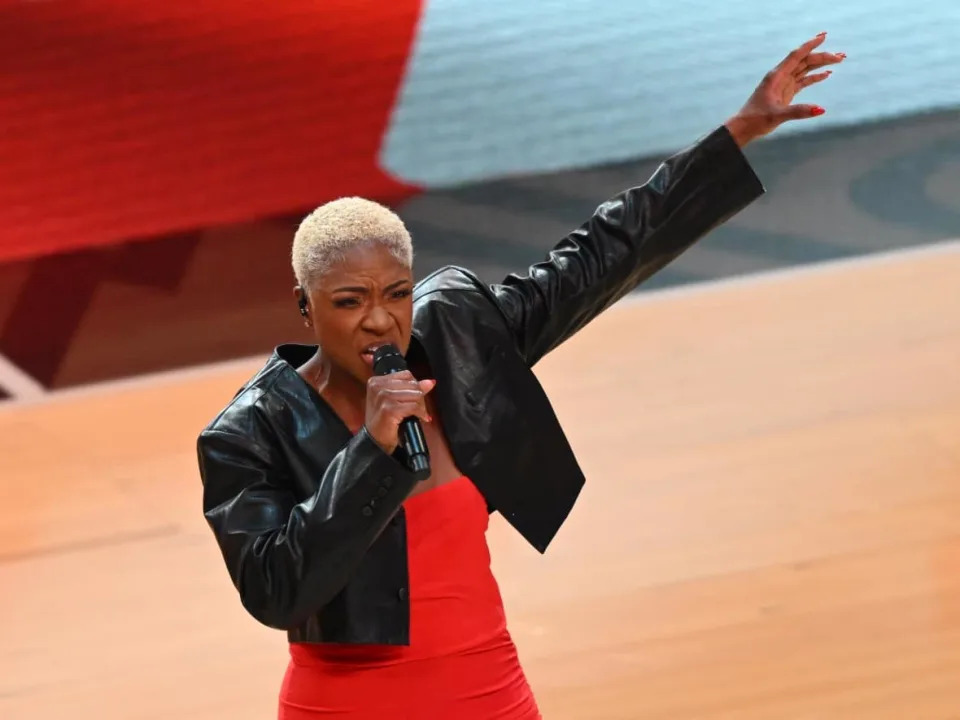
Jully Black performs O Canada at the NBA All-Star game in Salt Lake City, Utah, on Feb. 19. (Patrick T. Fallon/AFP via Getty Images - image credit)
This is a column by Shireen Ahmed, who writes opinion for CBC Sports. For more information about CBC's Opinion section, please see the FAQ.
The first song I learned was the Canadian national anthem and it was the first song I ever sang publicly. (I acknowledge I have a terrible singing voice.) I heard it every day in school — in both French and English — for over a decade.
The national anthem is something of which I was taught to feel proud. Calixa Lavallée wrote the music in 1880 to accompany a poem written by Adolphe-Basile Routhier. It was officially adopted when the National Anthem Act was passed in 1980.
The lyrics were changed to be gender neutral in 2018. Previously there had been a disastrous and unofficial attempt to change the lyrics by former Tenors member Remigio Pereira at the MLB All-Star Game in 2016.
Pereira changed the lyrics to reflect an All Lives Matter sentiment. That spectacular failure led to him being ejected from the group. I did not see the incident live, but read about what had happened. I remember feeling astounded that he reworked the anthem. The audacity!

Gregory Bull/The Associated Press
Throughout my youth, I felt an overwhelming sense of pride when the anthem was played at the Olympics as the Canadian flag was flown. There were moments when I definitely teared up watching athletes sing loudly as they stood on the podium. I knew the lyrics but had I really paid attention to them?
That changed drastically for me as an adult when I learned more about Indigenous history in this country. I am from an immigrant experience and am so cognizant of the privileges I have from having a Canadian passport, having access to universal health care, and all the freedoms we enjoy. In places that I have visited and have close connections with, that is not the case for women like me.
As a result, I am aware of the history I was not taught and the history that Canada has yet to address in a meaningful way.
I think this is a tremendous strength for our country; to recognize our untaught history in order to truly reconcile with the past. Sharing education programs, listening to important stories through books, podcasts, and art about Indigenous culture is precious. Campaigns to recognize ongoing injustices against Indigenous communities are so important and affects us through sports. The Arctic Games and North American Indigenous Games are only two of the many examples of how different sports platforms can weave in information about Indigeneity.
Over the weekend, the NBA All-Star game boasted the best players and most prominent artists across sports and entertainment. Aside from the Canadian talent representing on the court, there was a formidable performance from Canadian singer/songwriter Jully Black.
My family was gathered around the dinner table, and we all paused to listen to her sing the Canadian anthem. My husband, Mark, was recording her excitedly — they have worked together and are friends. Her voice rang out clear and confident, but after the first two lines my heart almost stopped. Black had changed the lyric. It took a moment for that to sink in for me. My husband was cheering already before I even processed what had just happened.
Black changed one word; instead of "our home and native land," she sang "our home ON native land."
She paused before singing "on" and I felt that. We were meant to feel it and have it resonate.
As someone who works with words everyday, I kept replaying that moment in my head. Words can wield so much power. It was only a few minutes before it spread like wildfire across Twitter and Instagram.
I'm not sure if the usual NBA All-Star weekend audiences understood the power of that moment, but that's also an impactful piece of this story. Black was teaching those who might not be aware, and offering an imperative piece of history that was long excluded from mainstream media and education in Canada, similar to Native American history in the U.S.
Black emphasized the reality that Canada was built on stolen and occupied Indigenous land, and we continue to ignore that fact if we do land acknowledgements but don't change the systems that affect Indigenous communities.
When asked about Black's word change, CityNews in Vancouver reported that xʷməθkʷəy̓əm (Musqueam) Chief Wayne Sparrow approved.
"It got a smile on my face," Sparrow said. "To be recognized like that goes a long way in reconciliation. I think issues like this go a lot farther than people realize." Sparrow said he would also like to see it made a permanent change.
According to Eva Jewell, research director at the Yellowhead Institute, Indigenous people have been saying that line for decades. What Black sang is not new, but it was reaffirmed to people all across the world. "I sang the facts," she said.
In preparing for this important performance, Black said she studied and dissected the lyrics. She changed the possession of the land and that is important. Land Back is an issue central to Indigenous justice.
Of course, not everyone was thrilled about it. Commentator Jordan Peterson was livid as were many right-wing supporters. But despite the screaming from random Twitter accounts and Indigenous genocide deniers, it generated a conversation about whether a change is imminent.
Black's powerful performance showed us that intentionality and understanding go a long way to teaching and correcting when the words may not be the right ones. I certainly didn't expect this moment of impact and beautiful change to come from centre court in Salt Lake City, Utah, at the NBA All-Star game, but Jully Black took us there.
And I'm quite sure that I don't want to go back.
Conference highlights ways P.E.I. could learn from Danish island’s fight against climate change
Wed, February 22, 2023
CHARLOTTETOWN, P.E.I. — A conference and workshop held at the P.E.I. Conference Centre on Feb. 6 highlighted ways the province could learn from the work being done on another small island in the fight against climate change.
The conference was hosted in Charlottetown by the Department of Environment, Energy and Climate Action and featured several speakers, including Søren Hermansen, manager of the Samsø Energy Academy in Samsø, Denmark.
“My ambition is to clarify to (P.E.I.) what are the next steps, where are we going with this. Is it going to be more expensive?” Hermansen told SaltWire Network in an interview at the event.
“After (post-tropical storm) Fiona, the attention is stronger than ever, because we felt the consequences of nature and all of the trouble it has to bring.”
Hermansen has been working with green energy for over 20 years, with the last several spent travelling the world to hold workshops, showcasing the work being done to reduce emissions on his home island.
Samsø has a population of more than 3,700 people as of 2017 and has been working to convert its grid to run on non-emitting energy sources going back to the 1990s.
Like P.E.I., Samsø is known for growing and exporting potatoes on top of being a popular tourist destination.
“There is a lot of similarities, not just in size only but also in the constructive society,” said Hermansen. “My take is, how do we organize a higher decision capacity and a better feeling of ownership among citizens of local communities like P.E.I. or Samsø that are kind of limited (in) scale and size?”
The goal of the workshops is to have an open discussion with communities to discuss changes needed in order for green technology to become more commonly used.
“The ambition is to make Samsø a showcase green lab development organization that helps the municipality, citizens and businesses to go in a greener direction,” said Hermansen. “You need to be able to produce or create a narrative people can connect to.”
Anna Demeo, chief product officer for Fermata Energy, also spoke at the event and told SaltWire Network the effects of climate change impact many different departments, making it important for the community to work together.
“It’s really a unique period in time, the solutions we find, it’s not a zero-sum game,” said Demeo. “What’s good for utilities can be good for consumers and can be good for the environment as well.”
Some of the work done on Samsø cited by Demeo was its implementation of offshore wind turbines, which account for over 70 per cent of the energy produced on the island.
“Technology is one piece of it, but it’s really about how do we work together in terms of policy and economic models,” she said. “All of these things are at the forefront discussion because of climate change, because of a changing grid and because of increased extreme weather events.”
Having the opportunity to share this message in P.E.I. was important as similar work is already being carried out.
“Everyone should want to have a part in this conversation because there are shared benefits no matter which one of those angles you’re coming from," said Demeo.
Environment, Energy and Climate Action Minister Steven Myers also attended the event, saying in a statement that having Hermansen in P.E.I. was a unique learning opportunity for the public.
“Hermansen won the Goteborg award – known as the environmental version of the Nobel prize – for his work with sustainable energy and he inspired Samsø Island to collectively build a community energy project,” said Myers.
“Since 2020, we have been building on lessons learned from sustainable energy models in Samsø and other jurisdictions to inform our nation-leading net-zero goals.”
Rafe Wright, Local Journalism Initiative Reporter, The Guardian
This Vancouver Island brewery hopped onto ChatGPT for marketing material. Then it asked for a beer recipe
Wed, February 22, 2023

Whistle Buoy Brewing in Victoria has employed the help of an unexpected expert to create its latest offering. (Rohit Joseph/CBC - image credit)
AI, or artificial intelligence, is everywhere. It's in banking, navigation and travel, and social media to tailor ads on our feeds, among other things.
Now, a Victoria brewery is making beer using an AI-generated recipe.
Whistle Buoy Brewing partner Isaiah Archer says his team had been playing around with the program ChatGPT, hoping it would help with developing product descriptions and writing social media posts, when they were inspired to try something else.
"As we were typing various things into it, we thought, let's see what happens if we ask it to give us a beer recipe," he told CBC's Rohit Joseph. They asked for a fluffy, tropical hazy pale ale.
It spat out a recipe that, for the most part, works.

Submitted by Isaiah Archer
The result is the brewery's new Robo Beer, which launched on Friday.
ChatGPT is an AI tool trained to mimic human responses. It's been used to write speeches, poems and music. CBC Vancouver even tried using it to write a story about textile waste.
The recipe wasn't perfect — Archer said it initially gave measurements for a homebrew batch. When it was adjusted for a larger brewing operation, he said it didn't quite make sense, so they had to make some changes.
"We had to add some human intervention," Archer said.

Rohit Joseph/CBC
The response during the Robo Beer launch was mostly positive, he said, adding some people questioned how 'craft' the beer was if it was developed by AI.
"We're not saying it's good or bad, but the beer that it told us to produce tastes solid," Archer said.
CBC tech columnist and digital media expert Mohit Rajhans says while some people are hesitant about programs like ChatGPT, AI is already here, and it's all around us. Health-care, finance, transportation and energy are just a few of the sectors using the technology in its programs.
"I think from an ethics standpoint, we will have to iron out how we feel about using this technology very soon in order for us to figure out how much we want to actually integrate it into our lives well," he told All Points West host Jason D'Souza.

Rohit Joseph/CBC
Whistle Buoy doesn't plan to use this method for future brews, but Archer said they may use it to ask questions and guide the process.
In fact, they already employ AI for their point-of-sale system and in other areas that require technology.
"Those things aren't necessarily replacing our ability to think for ourselves, but there are tools that assist us to be able to deliver the products and the experiences that we seek to deliver to our customers so I think seeing it as another tool in the box is a useful perspective for us."





























